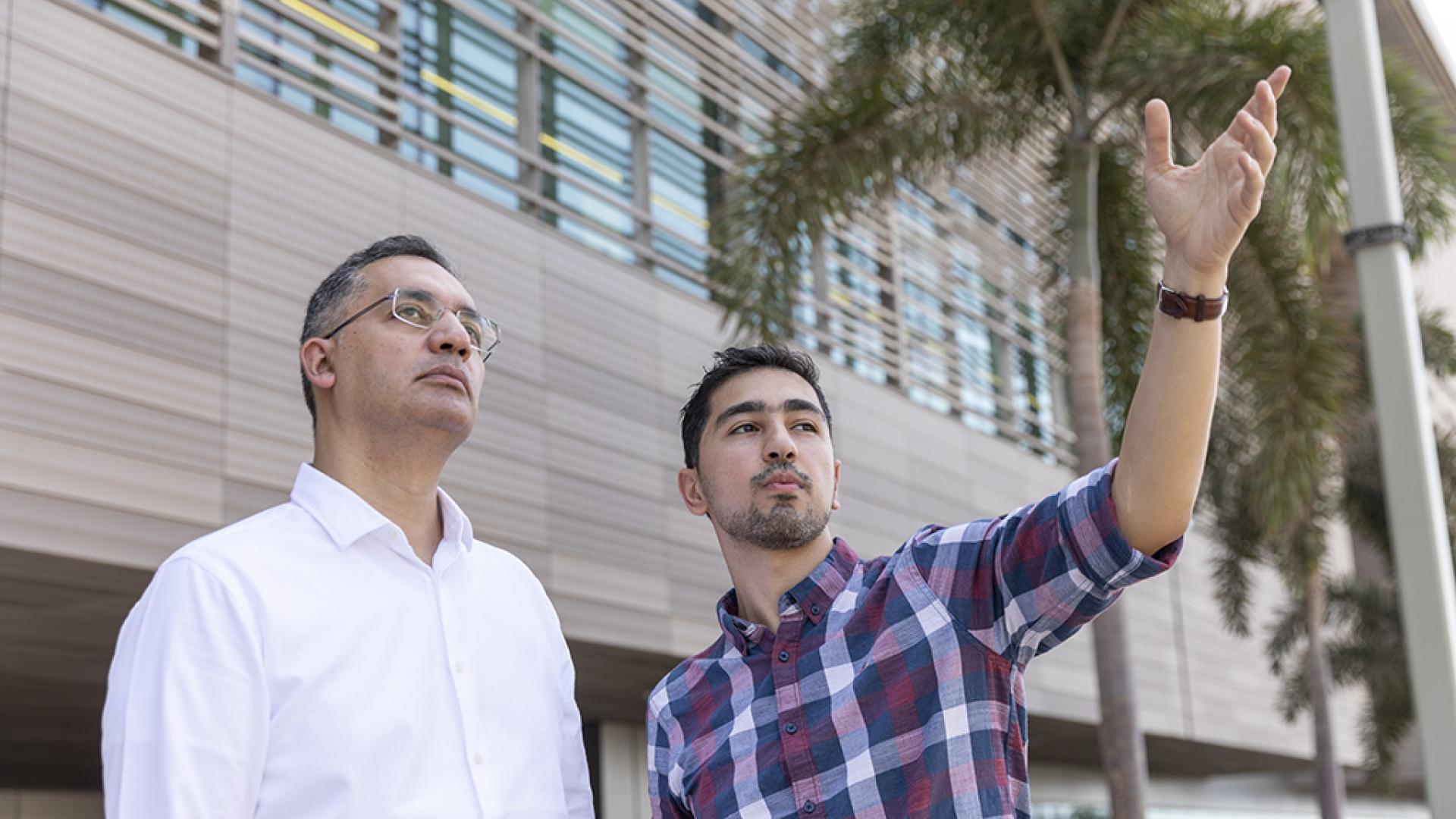Drones could be the key to connecting large numbers of smart objects to create the internet of things (IoT). KAUST researchers have shown that using drones, also known as unmanned aerial vehicles (UAVs), to fly between clusters of IoT objects to collect their data could be highly efficient.
“IoT networks will revolutionize the way we monitor, control and communicate with everything around us,” says Osama Bushnaq, a Ph.D. student in Tareq Al Naffouri’s lab. Crop fields could be filled with sensors that monitor water and nutrient levels. Networks of sensors that detect wildlife could also be deployed.
“To enable IoT networks, a huge number of low-cost, self-powered sensors are needed,” Bushnaq says. Traditional wireless data transfer is unsuitable for this purpose due to the limited power supply of each sensor and the complexity of connecting so many devices.
Sending UAVs to gather data via low-power, short-range transmission could be an alternative, transferring the burden of data aggregation from each individual sensor to a single machine that can autonomously return to base for recharging. The challenge comes in calculating the most efficient approach to data collection in order to minimize mission time and maximize productivity.

Imagine a field randomly covered with IoT sensors, Bushnaq says. “Covering a small area of the field at each hovering location improves communication between the UAV and the devices, reducing data aggregation time,” he explains. However, the UAV needs to spend more time traveling between all the IoT devices in the field. Minimizing the total mission time involves optimizing UAV coverage area, the number and location of hovering locations, and the UAV’s path between each location.
Read the full article



